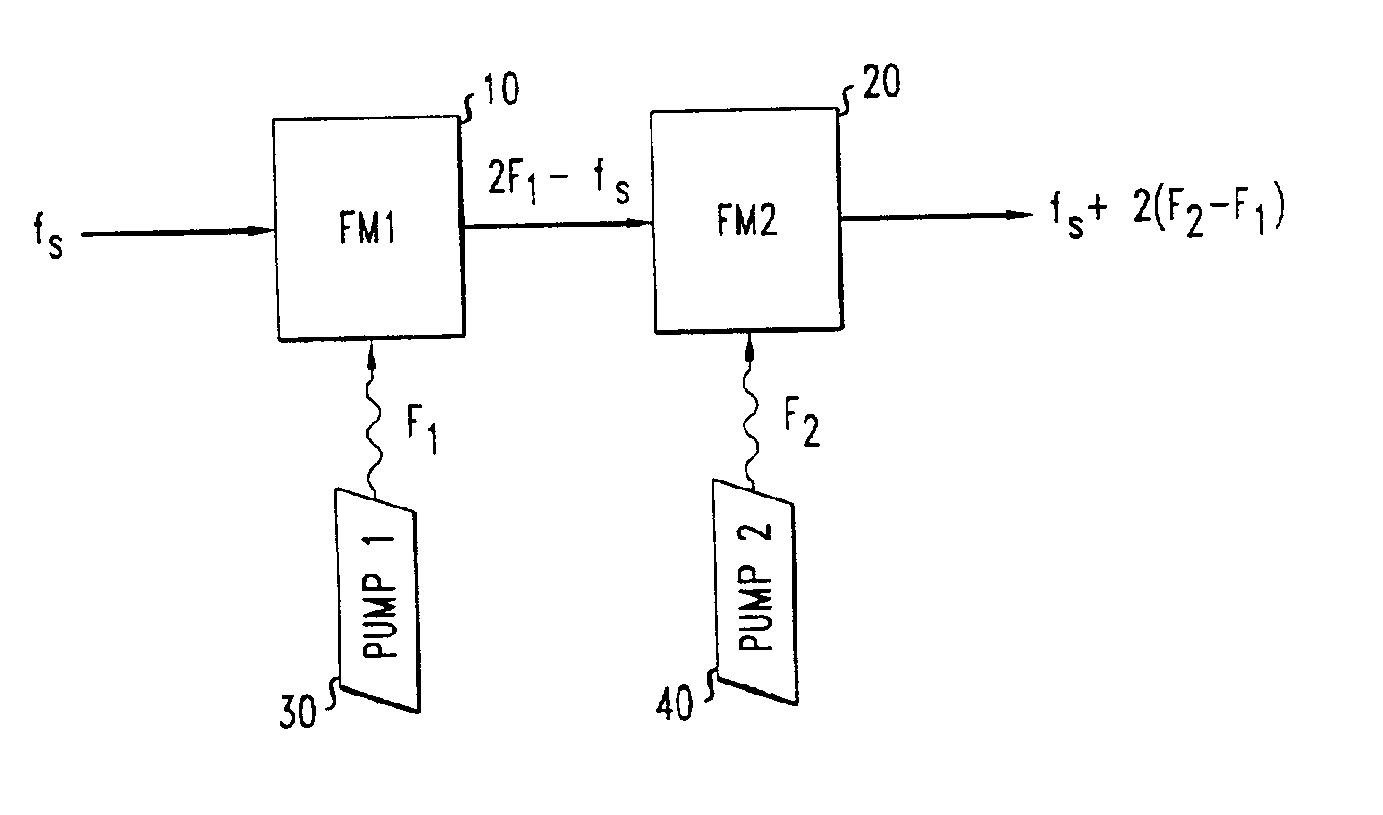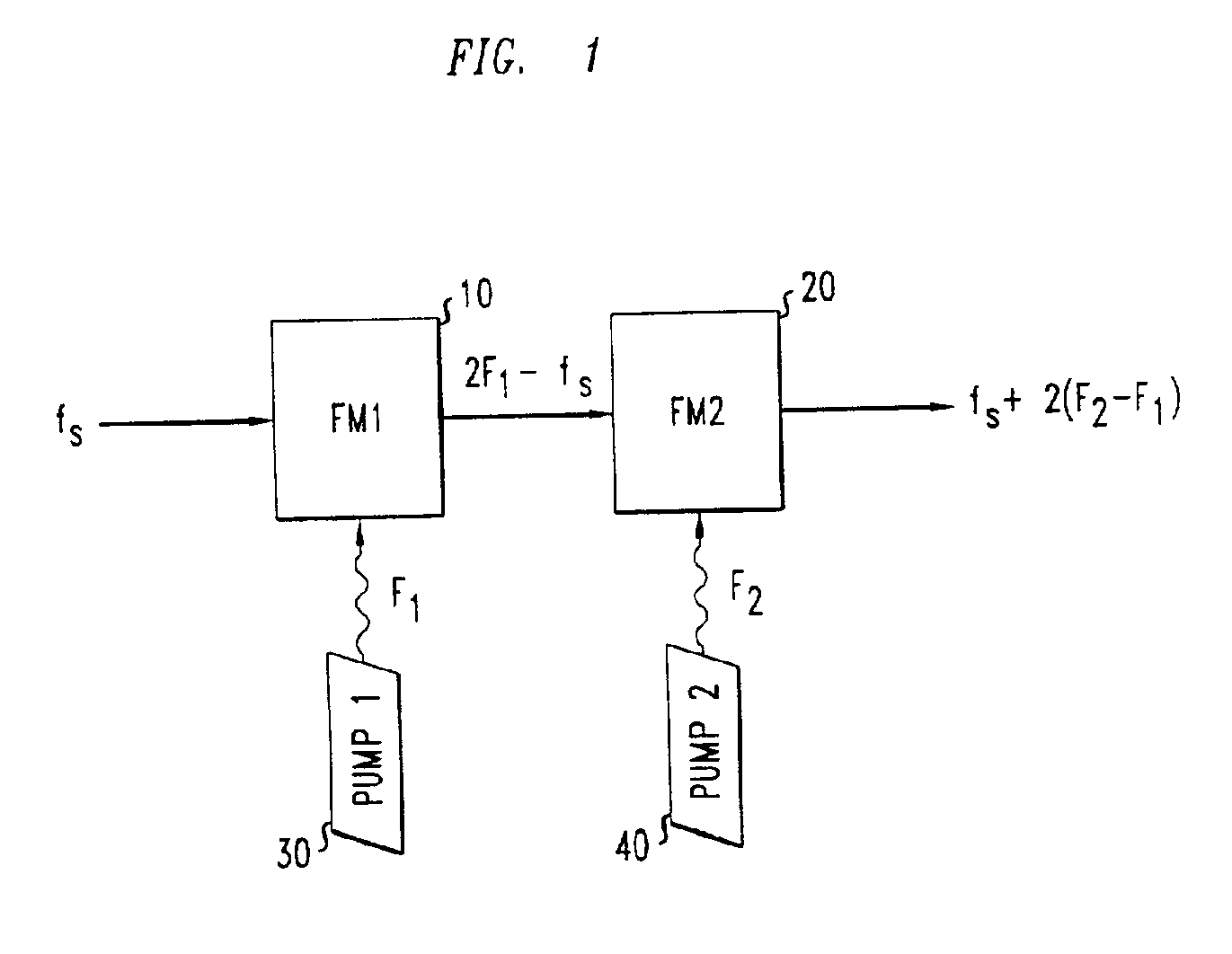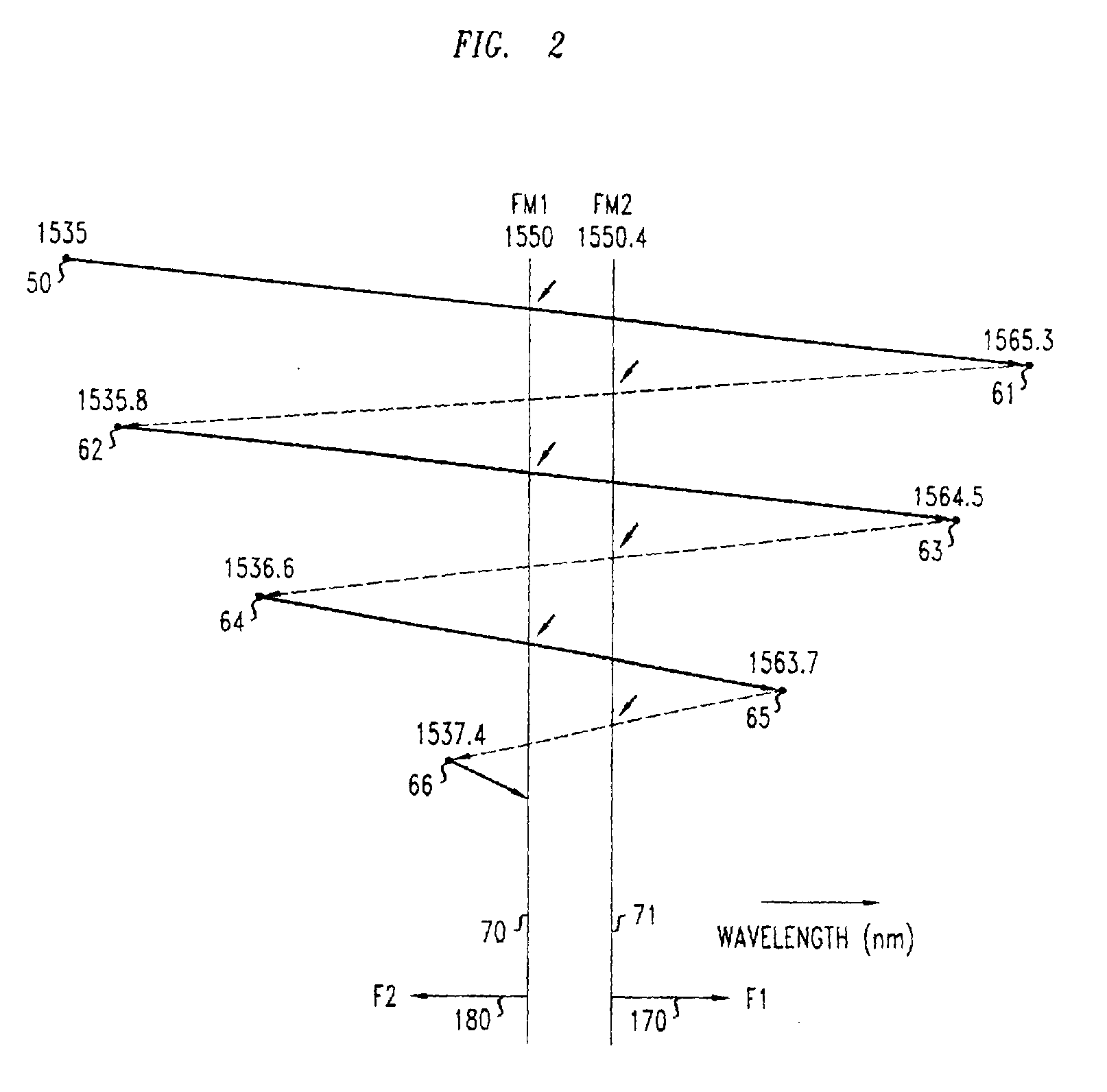Method and apparatus for generating a sequence of optical wavelength bands
a technology of optical wavelength bands and sequences, applied in non-linear optics, light demodulation, instruments, etc., can solve the problems of inability to generate ultrasonic waves of appropriate properties at frequencies, the comb generator of the '291 patent has limited application to wdm networks, and the network cost is overly large, so as to achieve the effect of optical channel spacing
- Summary
- Abstract
- Description
- Claims
- Application Information
AI Technical Summary
Benefits of technology
Problems solved by technology
Method used
Image
Examples
Embodiment Construction
As noted above, a frequency mirror is an optical element that has a reference optical frequency F. When a beam of light of frequency fs passes through a frequency mirror, at least some of the light in the output beam will have such a frequency fout in contraposition to F; that is, F will be at the midpoint between fs and fout. Equivalently, fout=2F−fs.
FIG. 1 illustrates the result of passing an incident light beam through two frequency mirrors in succession. Frequency mirror 10, denominated “FM1” in the figure, has a reference frequency F1, and frequency mirror 20, denominated “FM2” in the figure, has a reference frequency F2. As indicated in the figure, the output light that has been shifted in frequency by both frequency mirrors has the frequency fs+2(F2−F1). That is, the output frequency has been shifted by twice the difference between the two reference frequencies. As will be explained in more detail below, the frequency-shifted output can be repeatedly cycled back through frequ...
PUM
 Login to View More
Login to View More Abstract
Description
Claims
Application Information
 Login to View More
Login to View More - R&D
- Intellectual Property
- Life Sciences
- Materials
- Tech Scout
- Unparalleled Data Quality
- Higher Quality Content
- 60% Fewer Hallucinations
Browse by: Latest US Patents, China's latest patents, Technical Efficacy Thesaurus, Application Domain, Technology Topic, Popular Technical Reports.
© 2025 PatSnap. All rights reserved.Legal|Privacy policy|Modern Slavery Act Transparency Statement|Sitemap|About US| Contact US: help@patsnap.com



